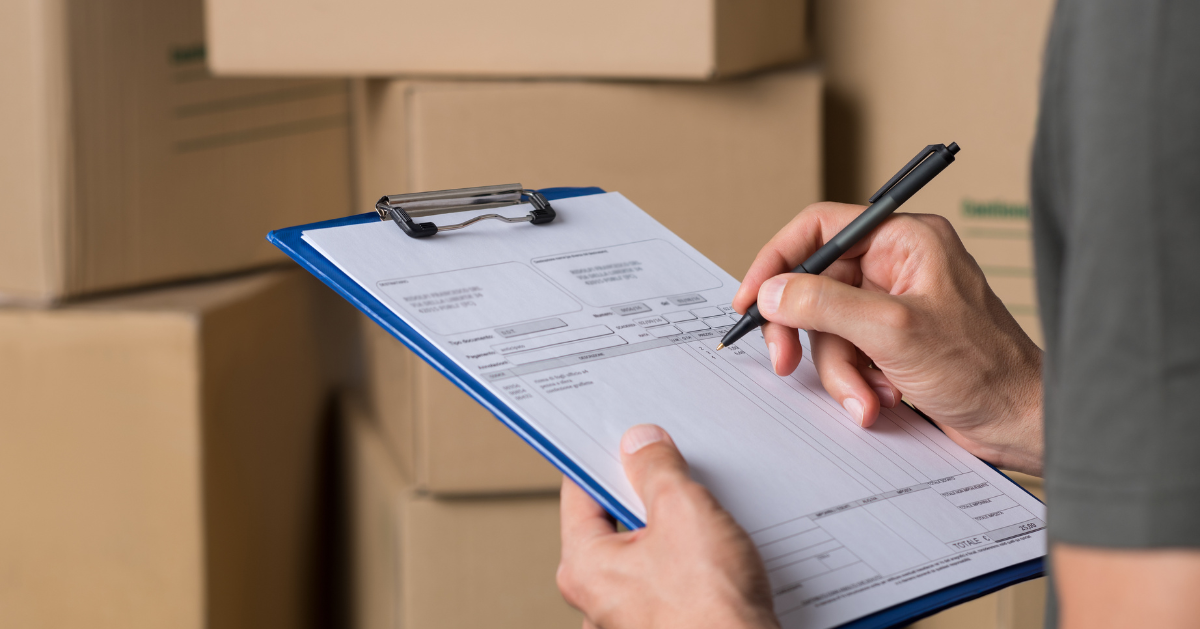Freight costs are among the top burdens companies today face. Across the board, shippers are continuously managing disruptions, trying to maintain a clairvoyant-like approach to fulfillment and reordering, and maintaining the back-end of all fulfillment processes. It’s a ton of material to handle, and pair that with the fastest-rising import costs since last fall, according to CNBC, it’s easy to see that the problems are growing more complex. Meanwhile, there are many freight auditing and settlement differences at play, and shippers need a clear strategy on how to gain control over their freight costs without losing sight of their goals.
Create a clear strategy for freight audit and payment
 Effective communication with carriers and other partners in your network can greatly enhance your freight audit process. Utilize real-time communication tools, such as an API-based transportation management system (TMS), to immediately address any discrepancies or issues that arise with shipments. This not only speeds up the resolution process but also builds stronger relationships with your carriers, ensuring more accurate billing and fewer disputes.
Effective communication with carriers and other partners in your network can greatly enhance your freight audit process. Utilize real-time communication tools, such as an API-based transportation management system (TMS), to immediately address any discrepancies or issues that arise with shipments. This not only speeds up the resolution process but also builds stronger relationships with your carriers, ensuring more accurate billing and fewer disputes.
Standardize data
Uniform data across all documents and platforms is essential for efficient freight auditing. Standardize the format and content of all shipping documents, including bills of lading, freight bills, and invoices. This uniformity makes it easier to automate data entry and reduces the likelihood of errors. It also streamlines the audit process, as the information is predictable and easier to verify.
Automate report generation and distribution
Standardized data naturally gives rise to the next quick tip, automation in reporting. Automating the generation and distribution of reports can save significant time and resources. Implement systems that automatically collect data and generate reports on key metrics, such as shipping costs, carrier performance, and frequency of discrepancies. This automation ensures that stakeholders regularly receive up-to-date information, enabling them to make informed decisions quickly.
Develop shipment optimization strategies based on market trends
Automation on the back-end also makes it easier to see where you can reduce overall spend too. Leveraging market trends to optimize your shipping strategies can lead to significant cost savings. Analyze historical data to identify patterns in shipping costs, seasonal fluctuations, and carrier performance. Use this information to negotiate better rates, choose the most efficient routes, and select carriers that offer the best value for money. This proactive approach helps you stay ahead of market changes and maintain cost efficiency.
Continuously assess costs to see when to scale the network
 Regularly assessing your logistics costs and network performance is vital for scaling operations effectively. Periodic reviews of your shipping volume, service needs, and expenditures allow you to identify when to expand or scale down your logistics network. This dynamic approach ensures that your logistics capabilities are always aligned with your current business needs, preventing both underspending and overspending.
Regularly assessing your logistics costs and network performance is vital for scaling operations effectively. Periodic reviews of your shipping volume, service needs, and expenditures allow you to identify when to expand or scale down your logistics network. This dynamic approach ensures that your logistics capabilities are always aligned with your current business needs, preventing both underspending and overspending.
Use electronic invoicing
Switching to electronic invoicing can streamline the entire billing process. Electronic invoices reduce the need for paper-based processes, leading to faster invoice processing and reduced errors. They also facilitate quicker audits and payments, improve record-keeping, and support environmental sustainability. Implementing an electronic invoicing system can significantly enhance operational efficiency and accuracy in freight logistics. Obviously, some carriers may still rely on manual invoicing, but even in these cases, the invoices can be digitized with the right tech stack in place.
Streamline invoice matching
Improving the invoice matching process is crucial for managing logistics expenses. Develop a system that automatically compares invoices with corresponding purchase orders and shipping documentation. A proper freight audit and billing system should flag discrepancies for review and ensure that only accurate charges are approved for payment. Streamlining this process reduces the risk of overpayment and helps maintain tight control over freight costs.
Automate anomaly detection and correction
Utilizing automated systems for detecting and correcting anomalies in freight billing can prevent costly errors. Implement technology that scans every invoice for irregularities such as duplicate charges, rate mismatches, or unauthorized services. This automation allows for real-time corrections and significantly reduces the administrative burden on your staff. By proactively managing these discrepancies, you can ensure billing accuracy and maintain trust with your carriers.
For example, a prior IL2000 review of freight classification documents as part of an ongoing freight audit program for a client found that 6-digit savings were possible just by holding a carrier accountable for a proper freight class. It may seem minor, but the implications are stark.
Track average cost by zone, mode and more
Detailed tracking of costs by zone, mode, and other parameters is key to understanding and optimizing your logistics expenses. Develop a robust analytics platform that aggregates data across different dimensions—geographical zones, transport modes, and types of goods. This visibility into detailed cost structures helps identify areas where spending is higher than expected and where adjustments can yield savings.
Hold carriers accountable with predefined variance thresholds
Setting predefined variance thresholds for carrier performance can enhance accountability and improve service quality. Establish clear criteria that define acceptable variance in cost, delivery times, and service levels. Regular audits against these thresholds can help you manage carrier performance, ensuring that deviations are addressed promptly and that contracts are renegotiated based on actual performance.
Enhance your freight audit processes with IL2000
Connect with an IL2000 team member to learn more about how our embedded freight auditing process can breathe new revenue into your supply chain.

